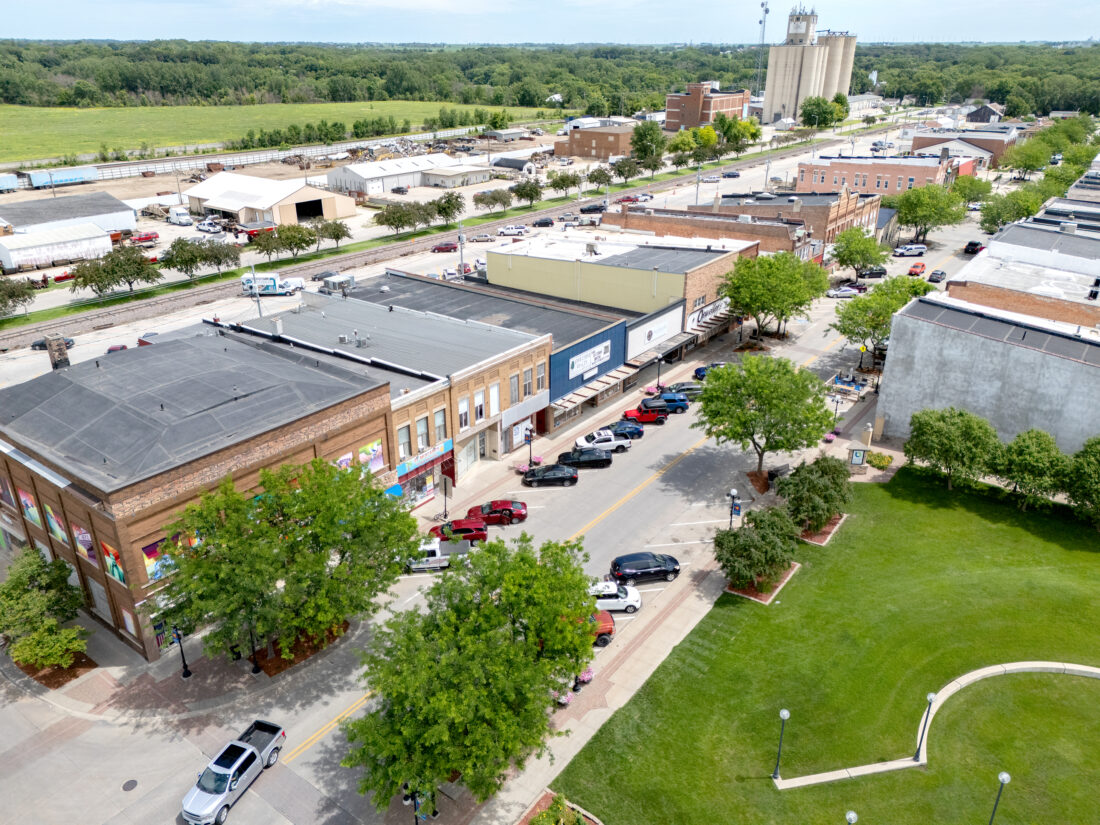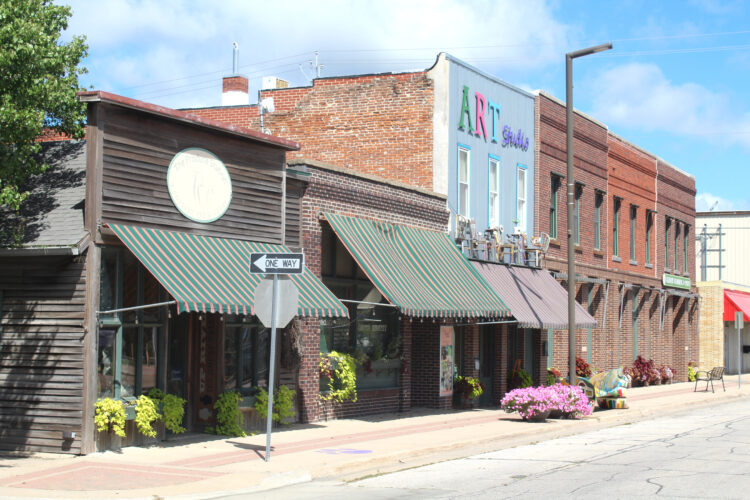Do we have what it takes to revitalize downtown?
Part Five of a Series — What we need to do is clear, but success requires new levels of organization, cooperation and communication

Revitalizing downtown Webster City has been the topic of multiple studies.
The purpose of this Crossroads series is to engage readers in the future of downtown Webster City.
The first story discussed downtown’s disintegrating brick buildings; next came the story of one man’s fight to save his barricaded brick building. Story three profiled the landmark renovation of one of downtown’s most historic buildings, the historic former Elks Club lodge. Most recently, three businesswomen were spotlighted for leading downtown forward with new buildings and new businesses.
Now the focus is on planning downtown Webster City’s future.
That starts with a question: Why revitalize downtown?
Begin with this: Only Webster City is Webster City. Without Webster City, there’d be no Kendall Young Library, no Fuller Hall, no Webster City Community Theater, no Jane Young House, no Arts R Alive, no Wilson Brewer Park, no Boone River or Brewer Creek trails, no Webster Theater, no Lynx.
Each of those amenities contributes to the whole of this community.
Similarly, only downtown is downtown. The history, charm and memories made in those buildings is “the real” Webster City. Downtown remains the center of retail shopping, the financial and government centers, and it’s still a place where people live.
Emotionally, people tend to return to places where they have had positive experiences. One of downtown’s great strengths is its “bank” of such experiences, shared by so many Webster Citians past and present.
So those are some emotional reasons.
There are practical, business-like reasons to revitalize old buildings too. They were built to last with locally-made bricks, old-growth lumber, marble, tile and ceramics. Many contain craftsmanship that can’t be duplicated today. Renovating an old building can result in many more years of useful life. There are businesses that may prefer to stage themselves in older buildings: bookstores, antique shops, ethnic restaurants, and neighborhood pubs, to name just a few.
But once an old building is torn down, the opportunity to repurpose it is gone forever.
Plans to revitalize downtown already exist. There are two plans — one completed in 2019 and another in 2023 — that, if followed, are almost guaranteed to result in a stronger, more interesting and viable downtown.
In 2018, Lindsay Henderson, then the city’s vitality director, applied for a grant to bring graduate students from the University of Iowa School of Urban & Regional Planning to Webster City to intensively study downtown. Webster City was the winner from a field of Iowa cities.
“They chose us because of the strength we showed in the face of adversity with Electrolux, and the way we rallied together to stay strong and keep moving forward,” Henderson said.
The study included a survey, focus groups and open houses, an estimate of the size of the market for goods and services in Webster City, and a survey of downtown building utilization.
“That study gave us a full picture of downtown, and was also a bargain. We paid something like $20,000 for studies valued at over $250,000,” Henderson said.
Some key conclusions and recommendations from that 170-page study include:
— Refurbishing store fronts and old buildings were cited as the two biggest opportunities;
— “Enforce current building codes quickly and equally”;
— “Waive building permit fees for small businesses and for improvements to vacant buildings”;
— “Embrace new minority residents with welcome baskets and store signs in Spanish”;
— “Establish trust between business owners and city government”;
— 40% of shoppers rated downtown shopping hours “poor,” with no evening or Saturday hours for most stores, and no coordinated hours among all downtown merchants.
An especially telling statement can be found in the study report:
“The Webster Theater project demonstrated to the community what great feats residents are capable of when they join together for a common goal, and can serve as an example for future revitalization initiatives.”
In addition to the downtown study, a master plan was prepared for the city’s parks and recreation facilities and programming. While the city has been guided by the parks plan, and both tax monies and grants have been used to improve local parks, no similar coordinated action has been implemented downtown as of this time.
Another study, officially the “Downtown Assessment Report,” was completed by the Iowa Downtown Resource Center in February 2023. The four members of the assessment team included a specialist in downtown businesses who owned a small business for 20 years; a real estate development specialist with extensive experience in downtowns across Iowa; an award-winning city planner; and a journalist, photographer and editor from Charles City who managed that city’s successful Chamber of Commerce and Main Street Iowa program.
Here are some key learnings from this study:
— “The No. 1 concern the team heard over and over again related to condition of downtown buildings. Downtown is not a priority and lacks community pride.”
— “A business on the first floor of a downtown building, but vacant above, creates multiple problems. It’s burdened with the maintenance and cash flow of the entire building.”
— “Quality and safety of buildings is dictated by a city’s building code and nuisance ordinances. A city can have codes, but without enforcement — they do nothing.”
— “Create a development team with the building inspector, mayor, council member, city attorney, county supervisor, chamber board member, architect, and a general contractor.”
— Put up billboards on U.S. 20 advertising the city’s shopping, dining, trails and public art.
— Create mid-block “pass throughs” allowing shoppers to walk directly from parking lots north and south of Second Street into the middle of retail blocks, rather than a full block, 600-700 feet.
— Put mini structures on vacant lots allowing small, start-up businesses to establish a customer base before leasing a full-sized storefront. This is something that Jewell has done.
With no shortage of sage advice from downtown experts, and extensive data concerning today’s downtown, why isn’t Webster City further along in rehabilitating and revitalizing its downtown?
The future answer to that question depends on the collective community.

It can be done: Buildings in the 700 block of Seneca Street show what thoughtful renovation can accomplish. Tuck-pointing of brick, removal of most sheet metal facades, a variety of building materials, brightly-colored cloth awnings, and visually interesting signs invite customers to stop, look and linger.
